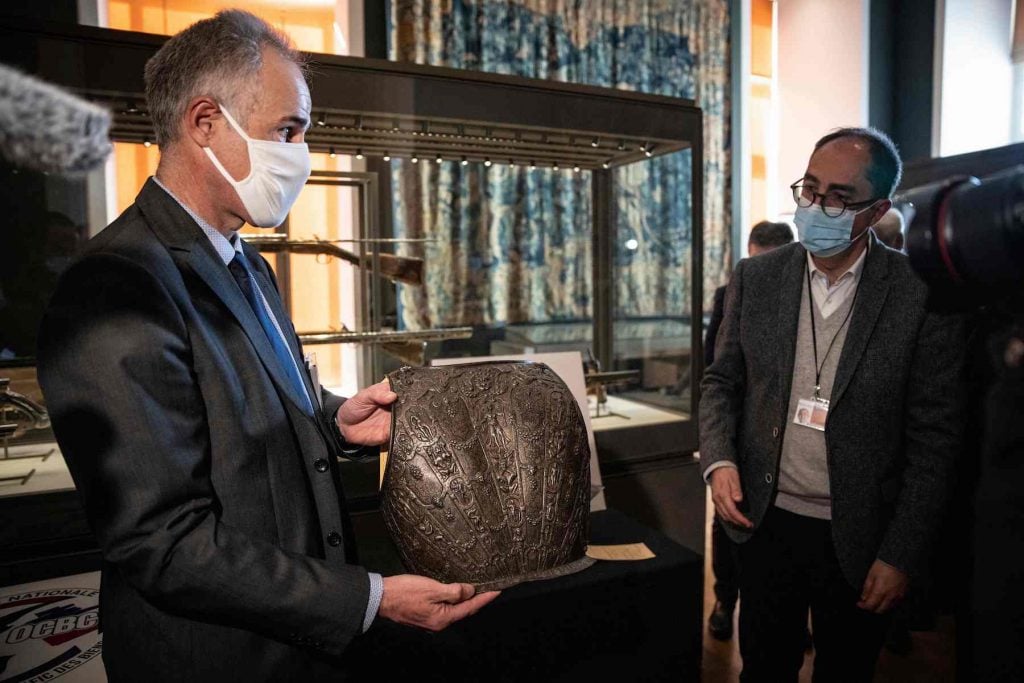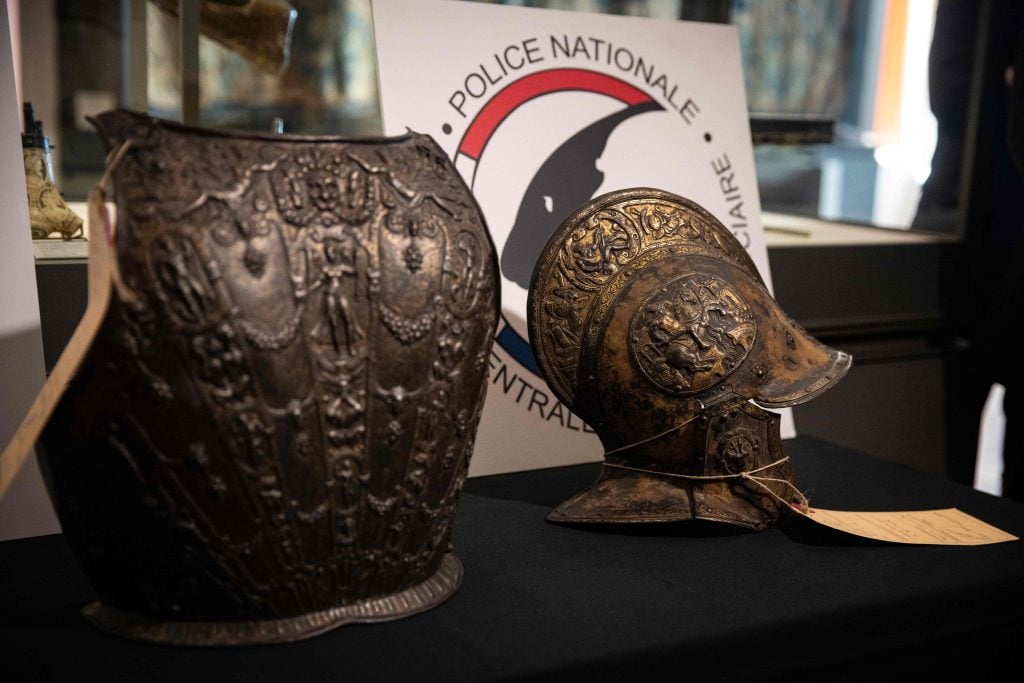Crime
Thanks to an Eagle-Eyed Appraiser, the Louvre Has Recovered Renaissance Armor That Was Stolen Almost 40 Years Ago
The gold and silver encrusted pieces were gifts from the Rothschild family.

The gold and silver encrusted pieces were gifts from the Rothschild family.

Caroline Goldstein

On May 31, 1983, two gold and silver encrusted pieces of armor were stolen from the Louvre. Now, almost four decades later, they’ve been recovered.
The Paris museum announced the recovery today after the 16th-century objects were returned by police. According to the museum, in mid-January a French military antiquity expert was contacted to appraise the works, a helmet and upper back piece, as part of the estate planning for a Bordeaux resident.
The unidentified expert was suspicious about the provenance for the Renaissance works, and contacted officers of the Central Office for the Fight Against Trafficking in Cultural Goods, according to Today24. The two objects were, in fact, listed in the Treima database, which catalogues stolen art within France. The database lists some 100,000 in total, with about 900 works added in 2020 alone.

A breastplate and a ceremonial helmet returned to the Louvre by the French Central Directorate of the Judicial Police (DCPJ). (Photo by Thomas Samson/AFP via Getty Images)
Just how the pieces came into the Bordeaux family’s possession is yet to be determined. Local authorities are still investigating.
The Rothschild family donated the armor to the Louvre in 1922, a decade before the heirs of Edmond de Rothschild gifted the massive 40,000-work collection to the museum that comprises works by Leonardo da Vinci, Raphael, Rembrandt, and David.
Philippe Malgouyres, the museum’s head of heritage artworks, told the AFP that the pieces of armor “are prestige weapons, made with virtuosity, sort of the equivalent of a luxury car today. In the 16th century, weapons became works of very luxurious art. Armor became an ornament that had nothing to do with its use.”
These particular pieces were likely made in a Milanese workshop between 1560 and 1580. They feature intricate gold and silver inlaid designs, and are estimated to be worth €500,000 ($600,000).
“I was certain we would see them reappear one day because they are such singular objects,” Malgouyres said, adding, “I never could have imagined that it would work out so well, that they would be in France and still together.”